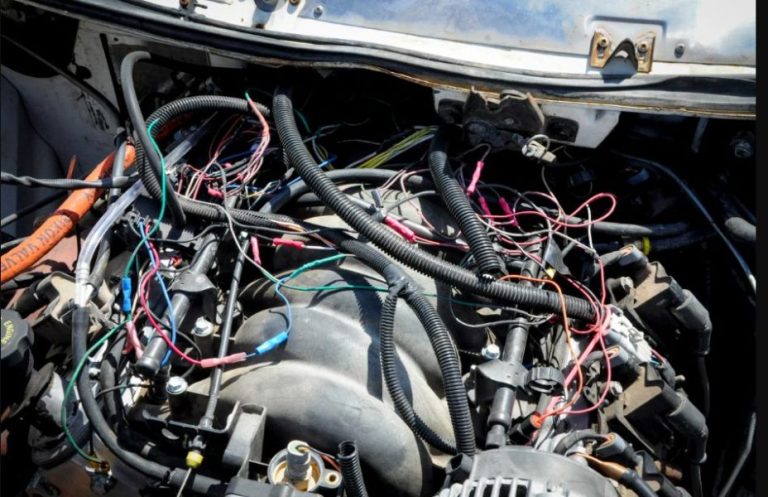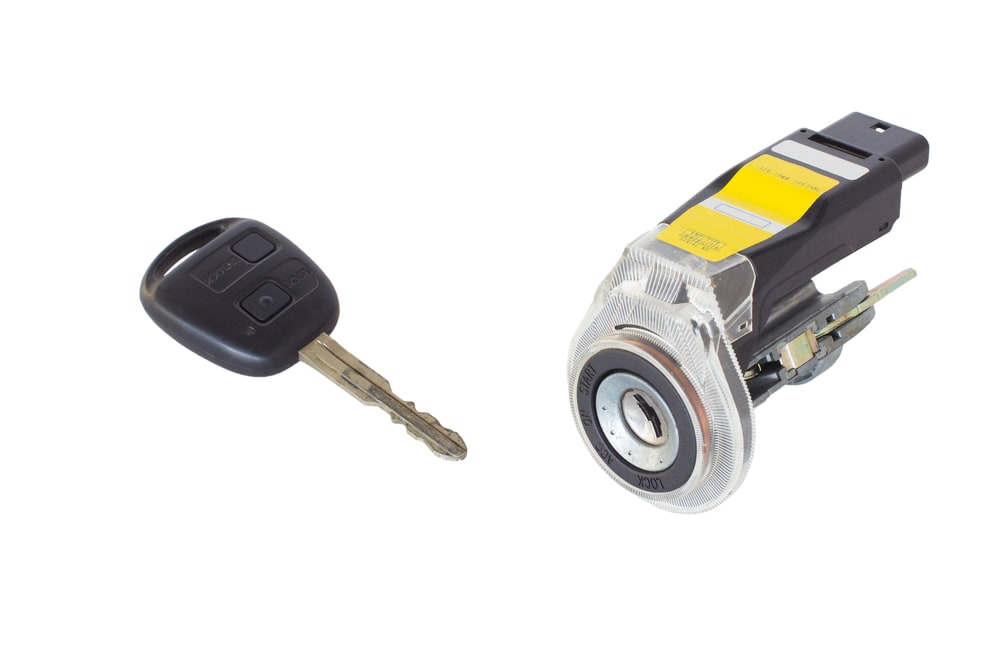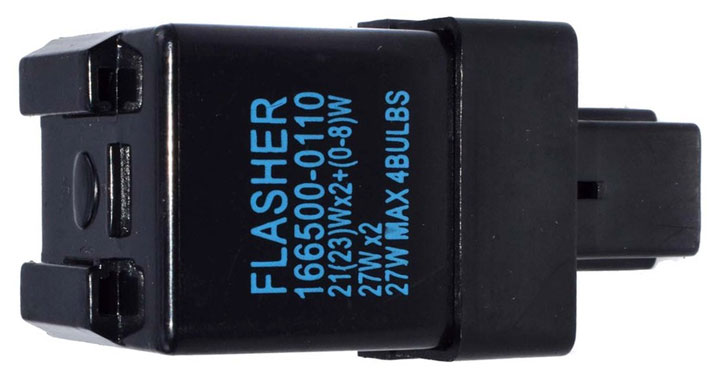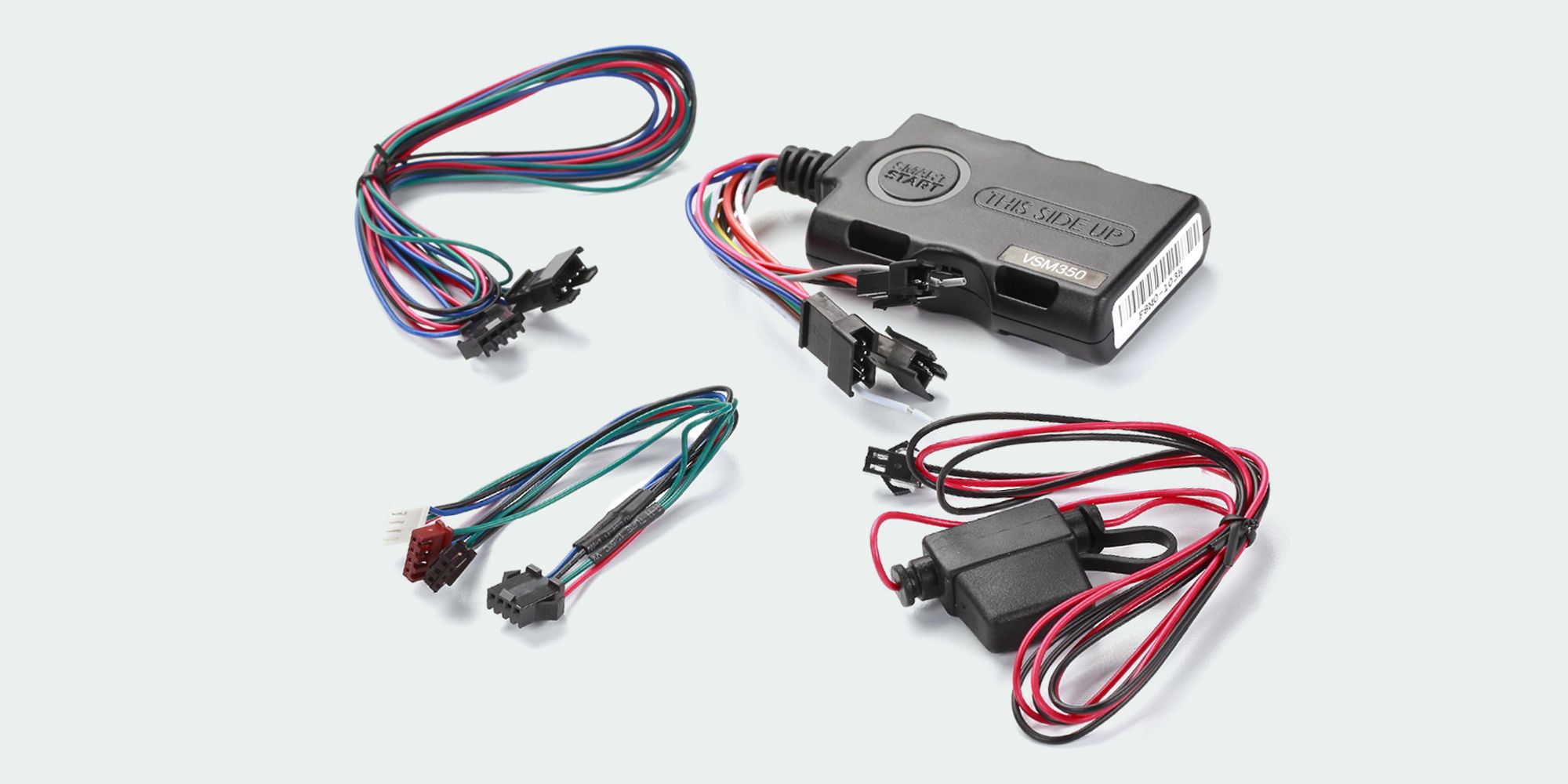Last Updated on May 14, 2023 by Ryan
Hazard lights are a crucial component of any vehicle, serving as a universal signal of distress or caution on the road. Their intermittent blinking is an unspoken language that communicates a myriad of situations, from car malfunctions to unexpected roadside stops.
However, when these lights begin to blink or malfunction when the car is off, it not only confuses the car owner but also sends misleading signals to other drivers.
In this comprehensive guide, we aim to shed light on this perplexing issue, diving deep into the causes, implications, and solutions of this common yet often misunderstood car problem. Drawing from a wealth of technical knowledge and real-world experiences,
We’ll help you understand and address the mystery of your hazard lights blinking when your car is off.
7 Steps Solutions to Common Hazard Light Problems
Addressing issues with your hazard lights promptly can prevent further complications and ensure your safety on the road. Here’s how to tackle some of the common hazard light problems:
1. Faulty Wiring

If you suspect that the wiring is the cause of your hazard light problem, it’s advisable to consult with a professional mechanic. They can inspect the wiring and make necessary replacements or repairs.
2. Blown Fuses

If a fuse related to the hazard lights blows, replacing it should resolve the issue. Your vehicle’s manual will typically have instructions on how to locate and replace fuses.
3. Burnt Out Bulbs

If one or more of your hazard light bulbs have burnt out, replacing them should fix the problem. Keep in mind that it’s best to replace all bulbs at the same time to ensure consistent brightness and longevity.
4. Faulty Switch

A faulty hazard light switch can often be replaced relatively easily. Depending on your vehicle’s make and model, you may be able to do this yourself, or you might need the assistance of a mechanic.
5. Faulty Flasher Relay

If your hazard lights are blinking erratically or not at all, it might be due to a faulty flasher relay. A professional mechanic can replace the relay and ensure that the lights are blinking correctly.
6. Battery Issues

If your car’s battery is the culprit, you may need to recharge it or replace it entirely. If you’re uncertain about the condition of your battery, a mechanic can perform a test to determine its health.
7. Aftermarket Alarm Systems

If an aftermarket alarm system is causing the problem, it might need to be reconfigured or removed. An auto electrician or a professional mechanic who specializes in vehicle electronics can help with this.
Remember, always consider consulting with a professional if you’re unsure about performing any of these fixes. Your safety and the safety of others on the road are paramount.
Common Issues with Hazard Lights
Hazard lights are essential for vehicle safety, but like all components, they can develop issues. Here are the most common problems:
Hazard Lights Blinking When the Car is Off
This is an unusual situation that might leave many car owners perplexed. Here are the common reasons:
Alarm System Activation
Sometimes, hazard lights may blink due to the activation of the vehicle’s alarm system. This could be a security feature in some cars, particularly those with aftermarket alarm systems.
Electrical Faults
In some cases, electrical issues such as poor ground, a short circuit, or faulty wiring may cause the hazard lights to blink even when the car is off.
Hazard Lights Won’t Turn Off
The persistent flashing of hazard lights can be bothersome and potentially drain your car battery. The common causes are:
Faulty Switch
The hazard light switch could be stuck or broken, causing the lights to remain active.
Electrical or Wiring Issues
Faulty wiring, or issues with the vehicle’s electrical system, can also cause the hazard lights to stay on.
Hazard Lights Not Working
This is a serious issue as hazard lights are crucial in emergencies. The usual culprits are:
Blown Fuse
A blown fuse could disable the entire hazard light system. Replacing the fuse typically resolves this issue.
Burnt Out Bulbs
Over time, the bulbs for your hazard lights can burn out, especially if you use them frequently.
Faulty Flasher Relay
The flasher relay, which regulates the on-off pattern of the lights, can also fail, preventing the hazard lights from working.
Hazard Lights Blinking Irregularly
Hazard lights should blink in a regular, consistent pattern. If they don’t, you may have:
Burnt Out Bulbs
When one or more bulbs burn out, it can disrupt the regular blinking pattern.
Electrical Issues
Once again, wiring faults or poor electrical ground could lead to this problem.
These are common issues, but every car is different. If you’re facing a problem with your hazard lights, it’s important to consult your vehicle’s manual or contact a certified mechanic. This ensures you get advice that’s specific to your make and model.
Reasons for Hazard Light Malfunction
Hazard lights are a vital safety feature in a vehicle, designed to warn other drivers of potential danger or a stationary vehicle. However, these lights can malfunction due to several reasons:
Faulty Wiring
The wiring that connects your hazard lights system can become worn, damaged, or loose over time, especially in older vehicles. This can cause the hazard lights to function erratically or not at all.
Blown Fuses
The hazard lights in your vehicle are protected by a specific fuse to prevent damage from electrical surges. If this fuse blows, which could occur due to a surge or simply over time, your hazard lights may not function.
Burnt Out Bulbs
Each of the flashing lights in your hazard light system has its own bulb. If one or more of these bulbs burn out, the system can malfunction, resulting in erratic flashing or no flashing at all.
Faulty Switch
The switch that activates your hazard lights can wear out or become damaged over time. This could lead to the lights not turning on when pressed or not turning off once activated.
Faulty Flasher Relay
The flasher relay in your car controls the on-off blinking of your hazard lights. If this relay becomes damaged or wears out, it can cause the lights to blink erratically or not at all.
Battery Issues
If your vehicle’s battery is dying or has a weak charge, it might not supply enough power to the hazard light system, causing it to malfunction.
Aftermarket Alarm Systems
Aftermarket alarm systems sometimes tie into the vehicle’s lighting system. If improperly installed or if the system malfunctions, it can cause issues with the hazard lights.
Each of these issues can cause your hazard lights to malfunction, and many of them can also affect other electrical systems in your vehicle. If you’re experiencing a problem with your hazard lights, it’s recommended to have it checked out by a professional mechanic to ensure your safety on the road.
You Can See:
Preventive Measures for Hazard Light Issues
Regular maintenance and preventive measures can help keep your hazard lights functioning optimally. Here are some steps you can take:
Regular Vehicle Check-ups:
Regularly inspect your vehicle’s electrical system, including the hazard lights. Regular checks will help detect any issues early before they escalate into more serious problems.
Bulb Replacements:
Replace your hazard light bulbs as soon as you notice that they’re dimming or have burnt out. It’s recommended to replace all bulbs at once to maintain consistent brightness and increase lifespan.
Battery Maintenance:
Keep your battery in good health. Regularly inspect it for corrosion and ensure it’s fully charged. A healthy battery is crucial for the proper functioning of your car’s electrical systems, including the hazard lights.
Fuse Inspection:
Frequently inspect the fuses related to your vehicle’s hazard lights. If a fuse is blown, replace it promptly to prevent further issues.
Alarm System Maintenance:
If your vehicle has an aftermarket alarm system, ensure it’s properly configured and not interfering with the functioning of your hazard lights. Consider professional servicing if you’re unsure about how to maintain it.
Regular Servicing:
Regular servicing by a professional mechanic can help detect and resolve any underlying issues that might affect the performance of your hazard lights.
By implementing these preventive measures, you can reduce the likelihood of experiencing problems with your hazard lights, ensuring your vehicle remains safe and visible on the road.
Hazard Lights Flashing When Car Locked
Hazard lights are warning signal on a car that indicates the vehicle is slowing down or stopped on the side of the road. When approaching or passing, use caution. Many states require drivers to use their hazard lights when pulled over to the side of the road.
Most cars have an automatic setting for the hazard lights, which will cause them to flash when the car is locked. This is a safety feature that allows people to know there is a car stopped on the side of the road, even if they can’t see it.
Hazard Lights Came on by Themselves
If your hazard lights come on by themselves, it’s most likely a sign that your vehicle is experiencing an electrical problem. The first thing you should do is check your fuse box to see if a fuse has blown. If not, the next step is to check the wiring harness for any loose or damaged wires.
If you’re still having trouble, it’s best to take your car to a certified mechanic to have it diagnosed and repaired.
Hazard Lights Won’T Turn off
Almost every driver has had the experience of driving with their hazard lights on, only to find that they won’t turn off. It’s a frustrating experience, but it’s one that can be easily avoided. Here’s what you need to know about hazard lights and how to avoid this problem.
Hazard lights are typically used to indicate to other drivers that your vehicle is stopped or disabled on the side of the road. They can also be used when you’re driving in adverse weather conditions or when visibility is reduced. When you turn on your hazard lights, all four of your turn signals will flash simultaneously.
If your hazard light won’t turn off, it could be because the switch is faulty or there could be a problem with the wiring. If you suspect that the switch is the issue, you can try replacing it with a new one. If that doesn’t solve the problem, then it’s likely that there’s an issue with the wiring.
In this case, you’ll need to take your car to a mechanic for further diagnosis and repairs. Most cars have a dedicated hazard light switch, so if yours doesn’t, then you may want to install one. This will make it easier to activate your hazard lights without accidentally turning on your regular turn signals.
Hazard light switches are usually located near the headlight switch or on the steering column. To avoid having this problem in the future, make sure to regularly check your hazard light switch and wiring for any signs of wear or damage.
How to Turn off Hazard Lights After Crash
If your car has been in a crash, it’s important to turn off the hazard lights as soon as possible. Here’s how to do it:
1. If you’re able, pull over to the side of the road and park your car.
2. Locate the switch for your hazard lights. It’s usually located on the dashboard or near the steering wheel.
3. Turn off the switch and allow your hazard lights to go off.
4. If you’re not able to pull over, turn on your emergency flashers until you can stop and turn off your hazard lights.

Credit: www.youtube.com
How Do I Stop My Hazard Lights from Flashing?
If you’re like most people, you probably don’t think about your hazard lights until they start flashing on their own. There are a few different reasons why this might happen, but the most common one is that a bulb has burned out. If one of your bulbs has burned out, simply replace it with a new one and the problem should be solved.
However, if your hazard lights continue to flash even after you’ve replaced all of the bulbs, there could be an issue with the wiring or fuse. If this is the case, it’s best to take your car to a mechanic or dealership to have it checked out. They’ll be able to diagnose and fix the problem quickly so you can get back on the road safely.
Do Hazard Lights Drain Battery When Car is Off?
Hazard lights are a great way to make your car more visible on the road, but many people don’t realize that they can also drain your battery if you leave them on when the car is off. Here’s what you need to know about hazard lights and batteries. When you turn on your hazard lights, all of the bulbs in the car start flashing.
This uses a lot of power from the battery, which can eventually drain it if the car is left off for too long. The good news is that most modern cars have a system that will automatically turn off the hazard lights after a certain period of time, so you don’t have to worry about it if you forget to turn them off yourself. However, there are some cases where leaving your hazard lights on overnight or for an extended period of time can still drain your battery.
If you have an older car with outdated technology, or if your car’s system for turning off the hazard lights isn’t working properly, then it’s possible that your battery could be drained by the time morning comes around. In this case, it’s always best to err on the side of caution and turn off your hazard lights before you leave your car unattended for too long.
Why Does My Emergency Light Keep Flashing?
One common reason why an emergency light may keep flashing is that the battery is not properly seated. If the battery is not making good contact with the terminals, it can cause an intermittent connection that will make the light flash. Another possibility is that there is something wrong with the charging circuit.
This could be due to a bad capacitor or rectifier. If the emergency light has been in storage for a long time, the batteries may need to be replaced.
Why Do the Hazard Lights Come on Automatically?
The hazard lights are a warning signal on a vehicle that indicates the car is slowing down or stopped on the side of the road. When the driver activates the hazard lights, they flash on all four sides of the car simultaneously. This warns drivers in all directions that they need to use caution when approaching or passing.
Most newer cars have automatic hazard lights that activate when the car slows down rapidly or comes to a stop. This feature is designed to increase visibility and safety for both the driver and passengers, as well as any pedestrians nearby. There are many reasons why a driver might need to use their hazard lights.
If they have to change a tire on the side of the road, their hazard lights will warn other drivers of the potential danger ahead. If there’s been an accident further down the road and traffic is backed up, turning on your hazards lets everyone know your car is stopped so they can avoid running into you. Hazard lights can also be used when driving in bad weather conditions, like fog or heavy rain.
While hazard lights are incredibly useful, it’s important to only use them when necessary. If you’re driving along and suddenly turn them on without any reason, it could startle other drivers and cause an accident. It’s also against most state laws to drive with your hazard lights on unless you’re actually stopped or pulled over – so be sure to keep that in mind next time you’re out on the road!
Can You Have Hazards on With Car Off?
Yes, you can have hazards on with the car. However, there are a few things to keep in mind. First, if your battery is disconnected or dies, the hazard lights will not work.
Second, if you turn the hazard lights on and then turn the car off, they will stay on until you turn them off again or until the battery dies.
How Long Does It Take for Hazard Lights to Drain Battery?
Hazard lights are a lifesaver in many situations- from alerting other drivers of a breakdown to warning of an accident ahead. But, if you leave them on for too long, they can cause some serious problems. Here’s everything you need to know about how long hazard lights can stay on before draining your battery.
How long do hazard lights stay on before draining the battery? It depends on the car, but most models will have a safety feature that kicks in after 30 minutes to 1 hour of continuous use. This means that, in most cases, you’ll be able to leave your hazard lights on without worry for at least half an hour.
However, it’s still best to avoid using them for extended periods of time if possible- even with the safety feature, it will eventually drain your battery if left on for too long. What happens if my hazard lights drain my battery? If your hazard lights do happen to drain your battery, don’t panic!
You can usually jumpstart your car and be back on the road in no time. Just be sure to turn off your hazards before attempting to jumpstart- otherwise, you could damage the electrical system. Once you’ve got your car started again, be sure to drive around for a while so that the battery has a chance to recharge fully.
And of course, try not to let it happen again by avoiding excessive use of your hazard lights!
Conclusion
Hazard lights are a vital component of your vehicle, contributing significantly to road safety by signaling to other drivers that your vehicle may pose a potential risk. Understanding the common issues that can affect their functionality, as well as the reasons for their malfunction, is essential for any car owner.
Equipped with this knowledge, you can take proactive steps to address these problems promptly and effectively. Moreover, by implementing preventive measures and maintaining your vehicle regularly, you can ensure the longevity and optimal performance of your hazard lights.
Always remember, a well-maintained car is not just beneficial for you as a driver, but it’s also a responsibility towards the safety of all road users.
See Also:



